Depot Apartments
Introduction
Text-to-speech Audio
The Depot Apartments building, now serving as affordable housing, was originally built as a train depot in 1907 and renovated for its current usage in 1992. It is one of the oldest extant structures in Antigo still in use, and one of the few remaining symbols of Antigo’s rich origins and history as a railroad town. Serving as an important node in the Chicago and North Western Railway’s network, in the 1940s upwards of 70% of Antigo’s families had someone employed by the railroad. The company served as the anchor for the city’s historical economic and infrastructural development.
Images
A typical railroad survey crew in the late 19th century that would have planned the route northward from Eland to Antigo.
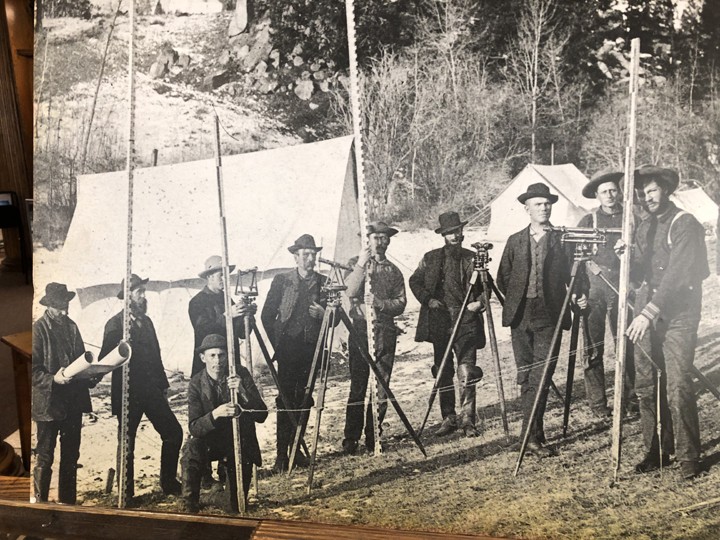
The original Antigo depot when the MLS&W first arrived in 1881.
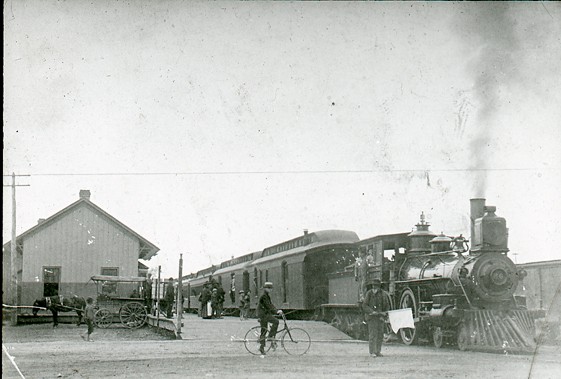
In 1907, with the railroad under C&NW ownership, it expanded operations and moved the original depot up the track to be used as a workshop and built a new depot.
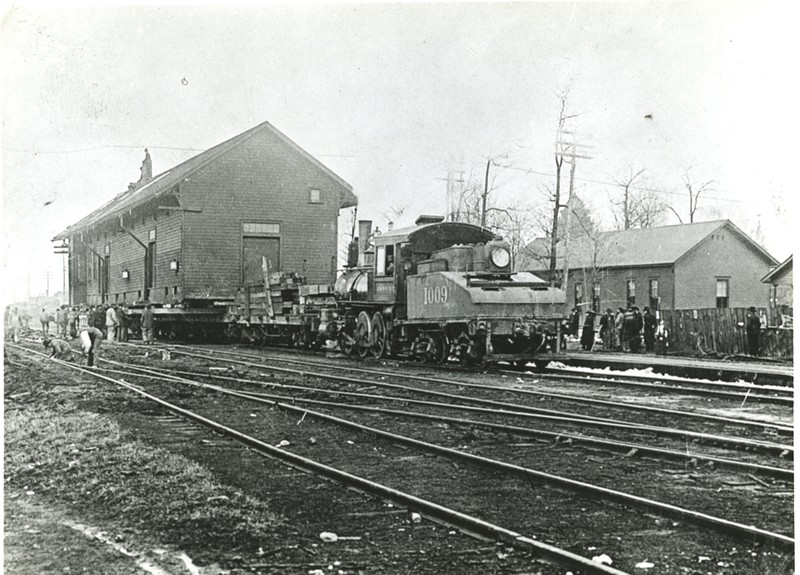
The new depot, built on 1907, served for over 50 years before being renovated to mixed residential/commercial use.
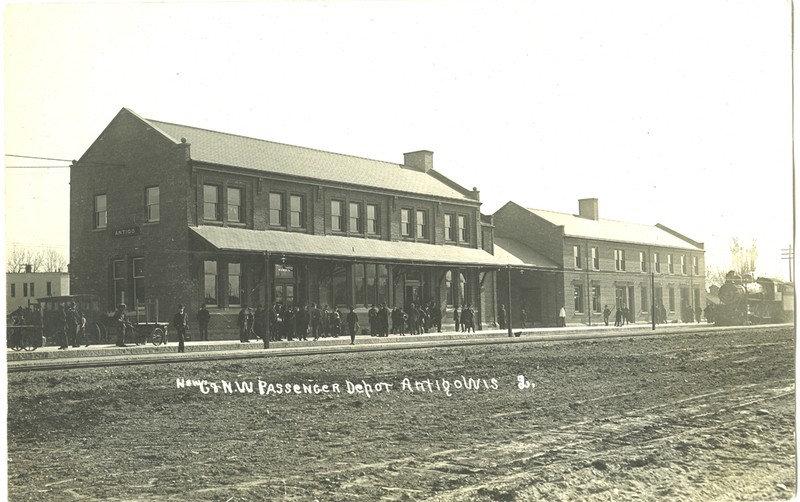
Crews that serviced locomotives resided in Antigo.
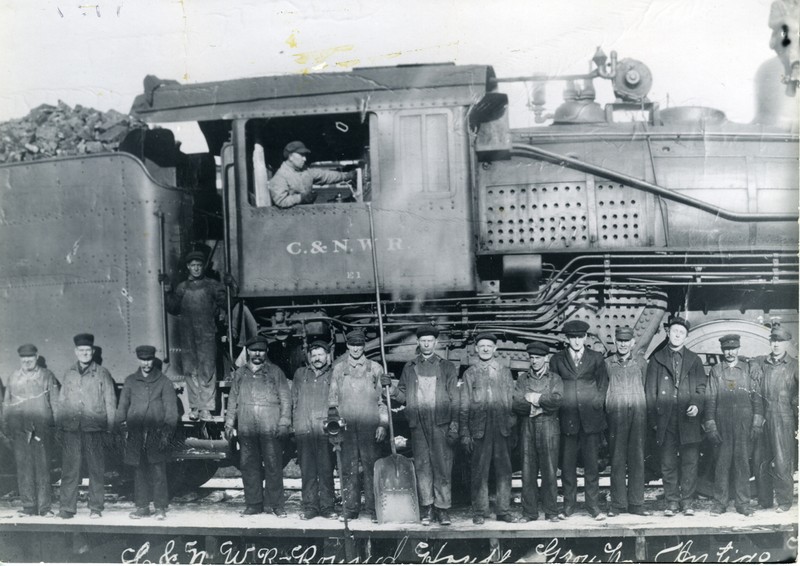
The 440 locomotive was the last regular train to leave the Antigo depot.
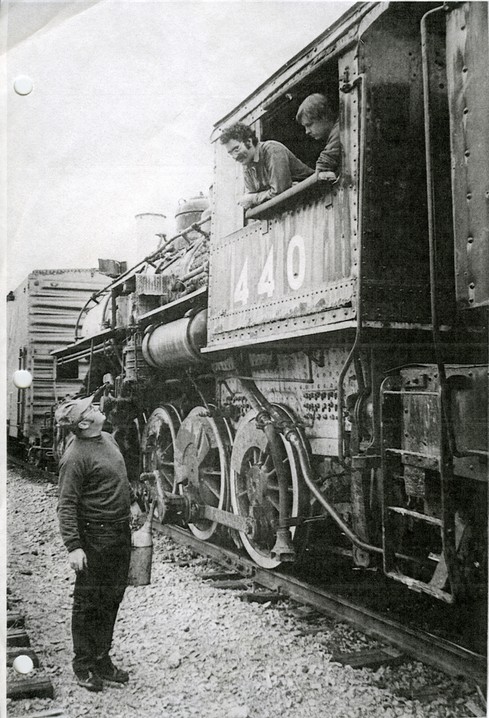
7) The depot as it appears in 2022. It was erected in 1907 and remodeled in 1991. Morse Street, in the foreground, was the site of the railroad tracks. The depot is now on the National Register of Historic Places.
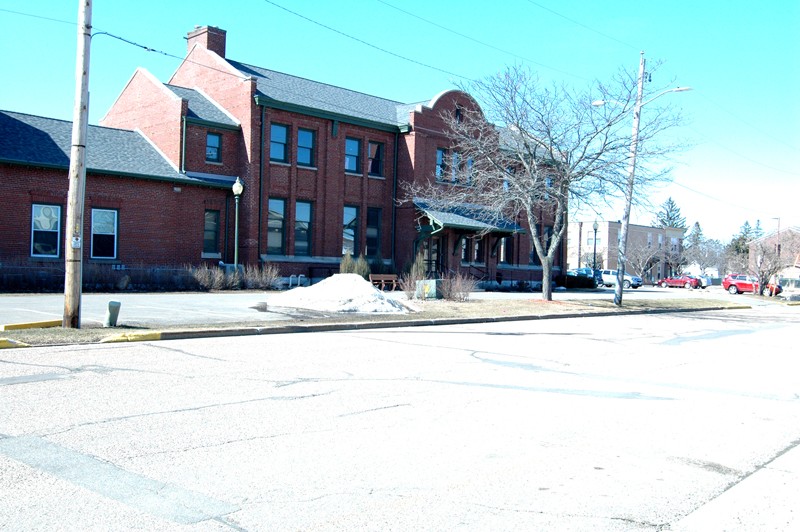
Backstory and Context
Text-to-speech Audio
Originally, the railroads almost bypassed Antigo entirely. In 1881, the Milwaukee, Lake Shore and Western Railway (MLS&W) planned to build a route from Eland (approximately 20 miles south of modern Antigo) to Ashland (approx. 130 miles northeast) which would have missed Antigo entirely, passing 2 miles to the west instead of reaching the town. The town’s founder, Francis A. Deleglise, tried to convince the MLS&W to change its route to pass through Antigo, donating 50 acres of his own property for railroad use to convince the company. This, combined with ample flat land in Antigo on which to construct a railyard, led to the MLS&W changing course. Langlade County’s first railroad was completed that year, a route stretching 23 miles from Aniwa to Summit Lake, with another 16-mile long branch to Rhinelander. The first train arrived in Antigo on August 15th, 1881, where the crew was greeted with sandwiches and lemonade. Deleglise, as it happens, was a firm teetotaler. (1)
From 1883 to 1886, extensive railroad infrastructure was built in what is now downtown Antigo, in the area between modern First and Seventh Avenues. A passenger depot, freight house, icehouse, pump house, engine house, and roundhouse were all built in these few short years immediately following the railroad’s arrival in Antigo. In 1892, the Chicago and North Western Railway Company (C&NW) purchased the MLS&W, and by 1893 had thoroughly consolidated the new acquisition into its own network. Soon after, a new brick roundhouse was built in Antigo in 1893 (the previous one having been constructed out of wood), signaling the new company’s keen interest in the city.
This interest became even clearer in 1904, when the C&NW invested in extensive upgrades to Antigo’s railroad infrastructure. With the completion of these upgrades, Antigo possessed upwards of 30 engine stalls, as well as extensive company offices and warehouses spanning 10 city blocks (2). Finally, in 1907 Antigo had a new depot built (3) and was made the headquarters of the C&NW’s Ashland Division, a title formerly held by Kaukauna. This put Antigo at the center of a sprawling rail network spanning from Kaukauna (via Appleton) in the south, through Antigo to Ashland by way of Watersmeet and Rhinelander in the north, and from Eland to Marshfield in the west. As part of this, the old depot was relocated and another new building constructed in its place.
The early 1900s, specifically the period around the First World War, was the peak of logging and lumber traffic in northern Wisconsin. By 1907, the timber resources directly around Antigo had become depleted by stark clearcutting, leading lumber providers to branch out for new forests to vanish.
Downsizing began as early as 1928. The Second World War would delay the inevitable. The city saw truly mindboggling amounts of freight move through it in the 1940s and 1950s. In this period, roughly 2000 freight cars a year, filled just with potatoes, would leave Antigo every year, to say nothing of other goods. (3) Another example, continuing longer, was the Vulcan Corporation. Vulcan was founded in 1909 in Ohio and relocated to Antigo in 1925 because of the abundance of maple trees and excellent rail connections. Vulcan manufactured a number of wood products and eventually settled on making bowling pins. In 1964 they contracted to export bowling pins to Japan to satisfy the growing interest in all things American in post-World War II Japan. In 1972, a peak year, Vulcan produced 500 to 600 sets of pins daily and over 100,000 sets of pins were shipped out of the Antigo depot to Minneapolis from where they were flown to Japan. (4)
Passenger service was also a vital part of the Antigo depot. (5) One routine, begun in 1905 and continuing for about 50 years, was the arrival of northbound and southbound trains at noon. They stopped for 55 minutes while crew members worked on the trains and passengers went for lunch. Antigo considered itself “The Gateway to the Northwoods”. Tourists traveling north changed trains in Antigo. One tourist promotion was the C&NW “Fishermen’s Excursion Specials”. Fishermen would leave Chicago in the evening for Antigo then change trains and proceed to either Lake Gogebic in Michigan’s Upper Peninsula (where the C&NW owned a resort) or to Woodruff and the Cisco Chain of Lakes in northern Wisconsin. After their fishing outings, travelers returned to Chicago in trains which had special refrigerated cars for trophy fish. Refrigeration likely used ice cut out of the lake in Antigo and stored in the Antigo station’s ice house. In early spring and late fall (May 1st to Memorial Day and Labor Day to Oct. 1st) Fishermen’s Specials ran only on weekends but from Memorial to Labor Day they ran daily except for Mondays. (5)
With diesel replacing steam engines beginning in the 1950s and the general decline of rail service, Antigo lost its prominence as a rail hub. (6) All the buildings associated with the railroad gradually disappeared, except for the depot. By 1991, almost a decade had passed since any train had passed through the depot. The city voted to issue $3 million in bonds to finance a $1.75 million development of the depot building and the construction of additional commercial space and housing on the depot grounds. The plan was developed by the Madison, Wisconsin Developer Randy Alexander, which specializes in repurposing historic buildings. The first floor was to be devoted to commercial space and the second floor to six apartments. Two eight-unit apartment buildings would be built on the depot grounds in a style compatible with that of the depot. (7) Today the depot building, on the National Register of Historic Places, is a fine example of how an historic building may be repurposed and serve as a reminder of an important part of the city’s history. (7,8,9)
Sources
(1) Robert M. Dessureau History of Langlade County Wisconsin, Berner Brothers Publishing Company, 1922. page 26
(2) Follmar, Joseph. “Antigo...55 Minutes for Lunch.” North Western Lines, July 1979. Chicago & Northwestern Historical Society accessed at http://langladehistory.com/Antigo-%20A%20Railroad%20Town%20and%20the%20C&NW.pdf
(3) ADJ 1907 Antigo Daily Journal October 30, 1907, Page 5
(4) Donald Degenhardt, “Notes for a presentation of the history of Vulcan to the Langlade County Historical Society.” Langlade County Historical Society archives.
(5) Poss, Robert J. One Hundred Years of Railroading in Langlade County, Wisconsin, 1982 Langlade County Historical Society archives.
(6) Antigo Daily Journal November 4, 2019 Page Prime Time Page 15
(7) Antigo Daily Journal August 18, 1954, Page 1
(8) Antigo Daily Journal September 26, 1991, Page 1
(9) National Register of Historic Places https://catalog.archives.gov/id/106781458
Langlade County Historical Society Archives
Langlade County Historical Society Archives
Langlade County Historical Society Archives
Langlade County Historical Society Archives
Langlade County Historical Society Archives
Langlade County Historical Society Archives
Langlade County Historical Society Archives
